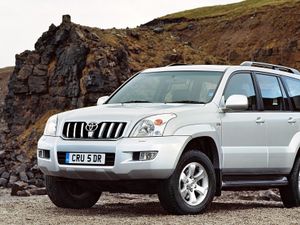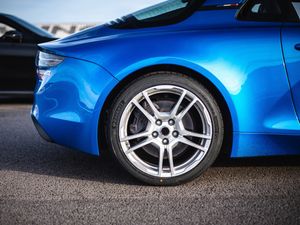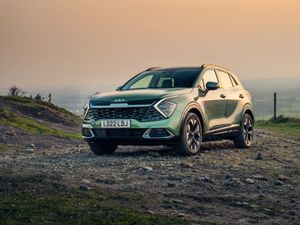Cargo carriers: what's the best van on sale today?
Jon Reay pits together three of the biggest vans on today’s market

At some point or another, everyone will find themselves needing a van – whether it’s part of your day-to-day job, the occasional house move or that trip to Ikea where you find you’ve bought more than you can squeeze in the car…
But being behind the wheel of a commercial vehicle doesn’t have to be as unrefined as you might think: vans are becoming increasingly plush and more car-like to drive than ever before.
We’ve gathered together three of the largest vans currently on sale – the Mercedes Sprinter, Peugeot Boxer and Volkswagen’s new Crafter – to see which is the easiest to live with and, perhaps crucially, is the most practical.
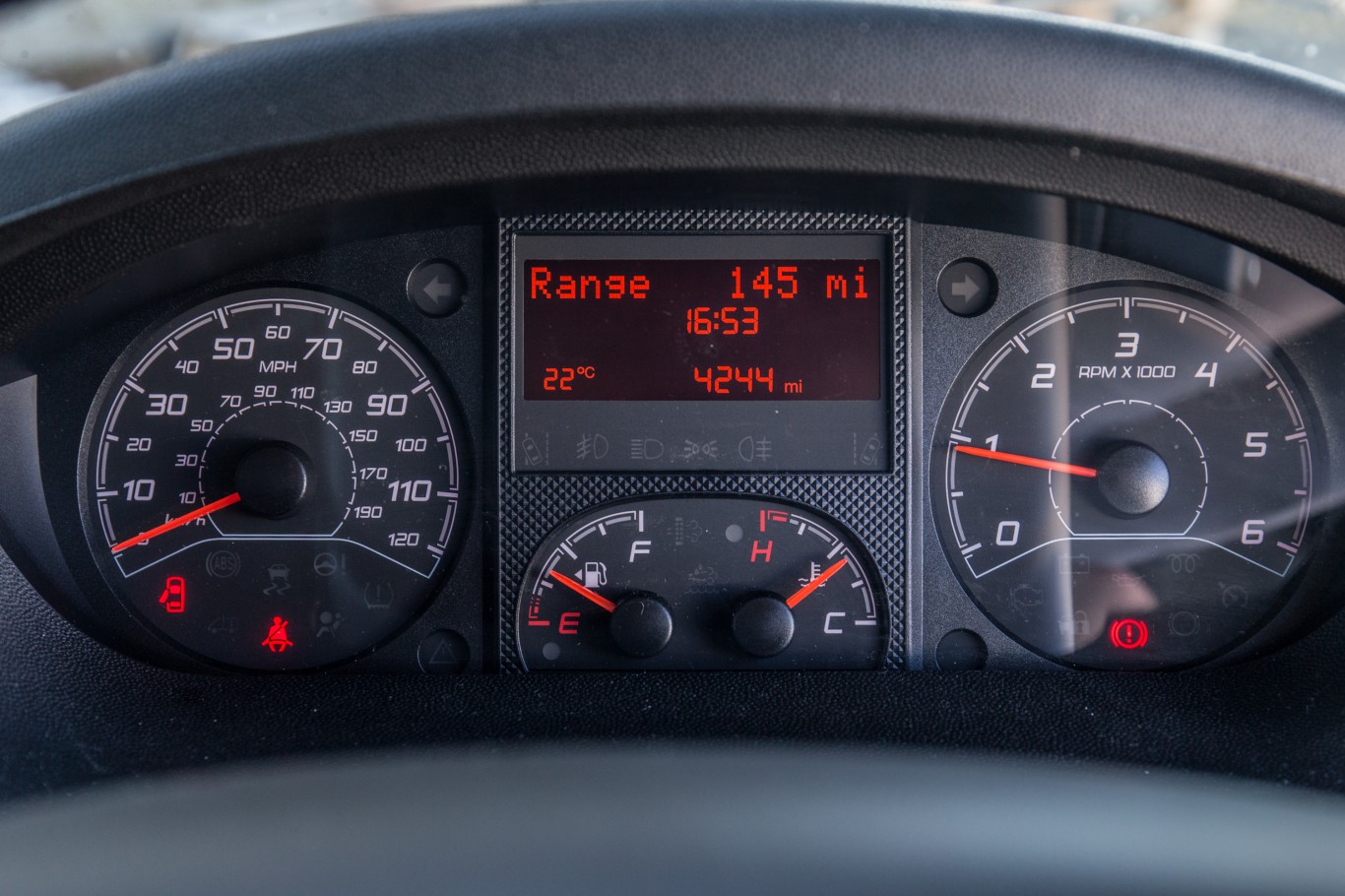
What’s new?
The newest here is arguably the Volkswagen, launched earlier this year. The previous Crafter was actually based on the same generation of Mercedes Sprinter we have here, even being built at Mercedes’s factory in Germany. Now though VW has gone it alone, redesigning the Crafter from the ground up without so much as a hint of Benz DNA, and moving production to a new factory in Poland.
Our other two vans are looking ripe for replacement by comparison. Both were launched in 2006, and though each has had a tweak or two along the way, they’re not much different from the versions that were rolling around while Tony Blair was still in Number 10.
Based on the Fiat Ducato, the Boxer doesn’t feel old inside so much as just plain basic – though you do at least get a modern infotainment system. The Sprinter, meanwhile, feels like stepping into a Mercedes of more than a decade ago: a sea of grey, robust-feeling plastics with a sat nav that can trace its roots back to the E-Class of two generations ago.
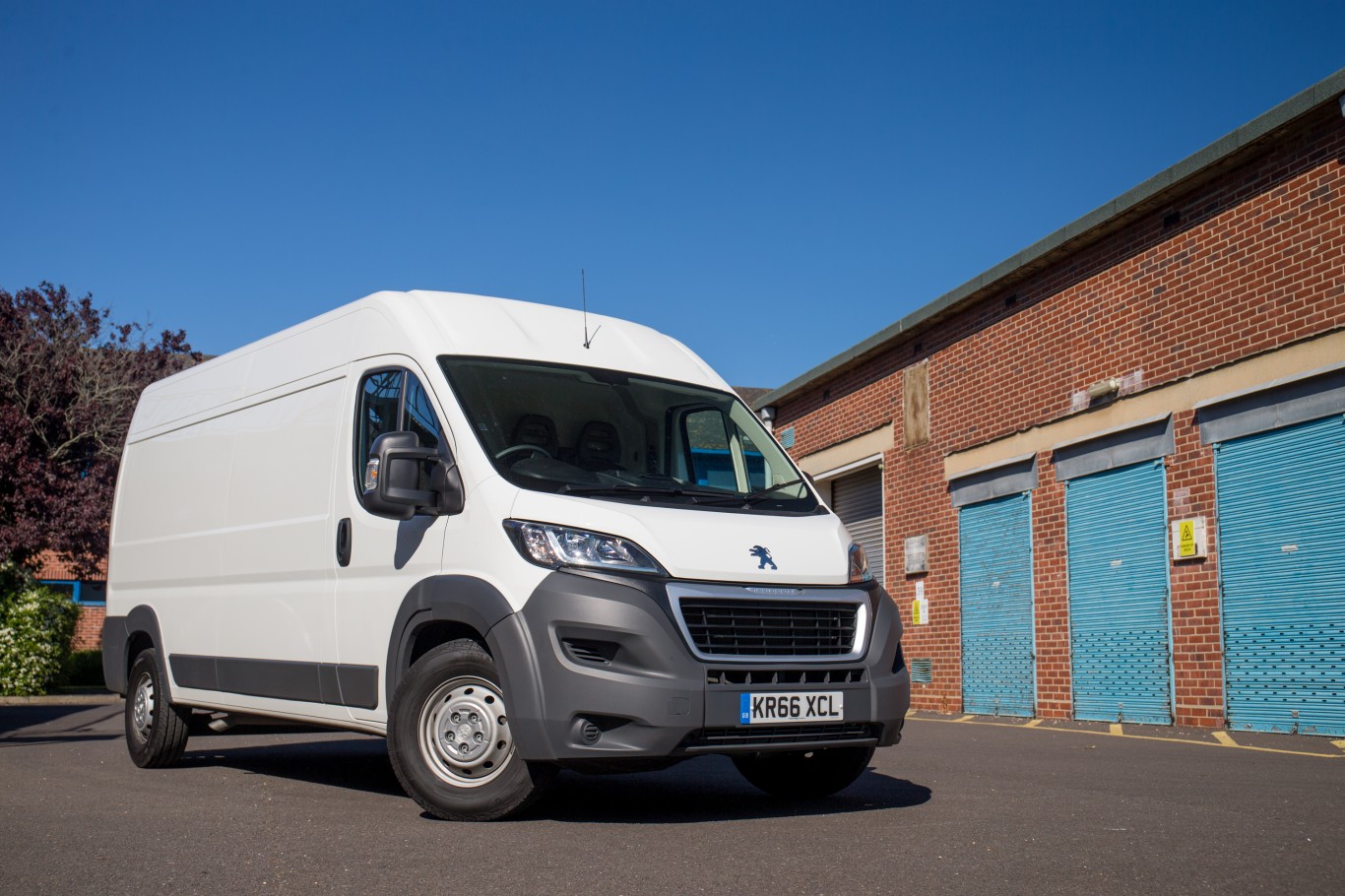
Looks and image
Okay, let’s be honest here, nobody buys a van for the way it looks. That said, the Volkswagen is arguably the most modern-looking of the three, and gentle facelifts mean that the Mercedes still manages to look sharp even today. The Peugeot, meanwhile, has a face only its Franco-Italian mother could love, with some very confused front-end styling indeed.
The Crafter and Sprinter win the battle of the badges without really trying, too – though there’s an inevitable premium to pay for buying German. The Peugeot, meanwhile, with its key and switchgear from a Fiat 500, can’t even appeal on the grounds of French quirkiness, so loses this round.
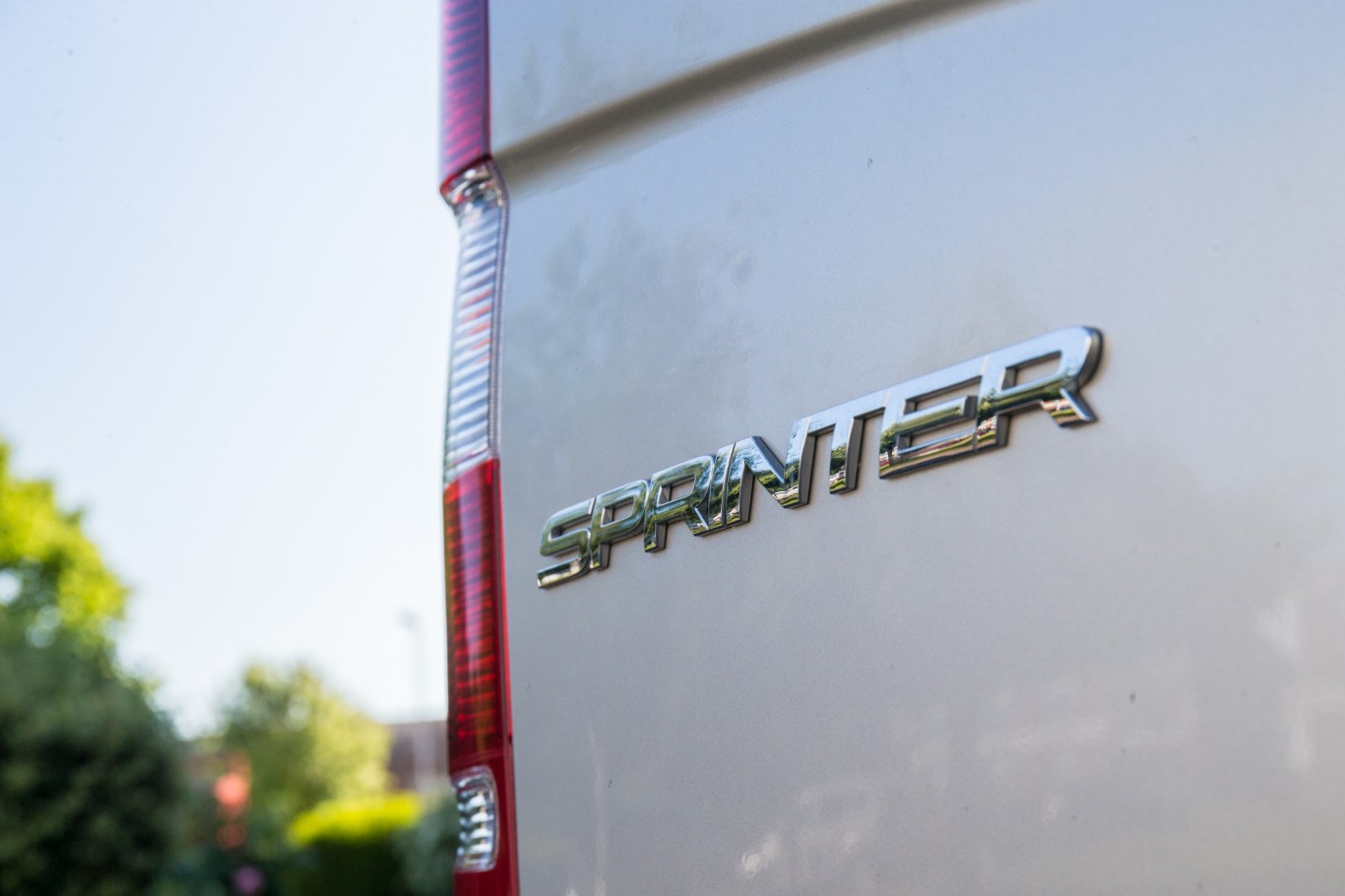
Space and practicality
Our vans are some of the largest on sale today – slotting in just above the standard Ford Transit and Vauxhall Vivaro – and all have similarly sized load bays.
The Sprinter offers the most variety of shapes and sizes, with four body lengths and three roof heights available, meaning anything between 7.5 cubic metres to a cavernous 17 cubic metres of space is available.
The Crafter is available in a similar breadth, with three body lengths, three heights and between 9.9 cubic metres and 18.4 cubic metres of space. The Boxer, meanwhile, offers four body lengths, three heights and between 8 cubic metres and 17 cubic metres of space.
What really sets each van apart here is how easy they are to load. Both the Sprinter and the Crafter offer 270-degree-opening rear doors, allowing uninhibited access when loading the van from the rear. The Boxer’s only open 180 degrees and – more crucially – don’t clip in place at their widest setting, leaving them susceptible to flapping shut in anything more than a light breeze.
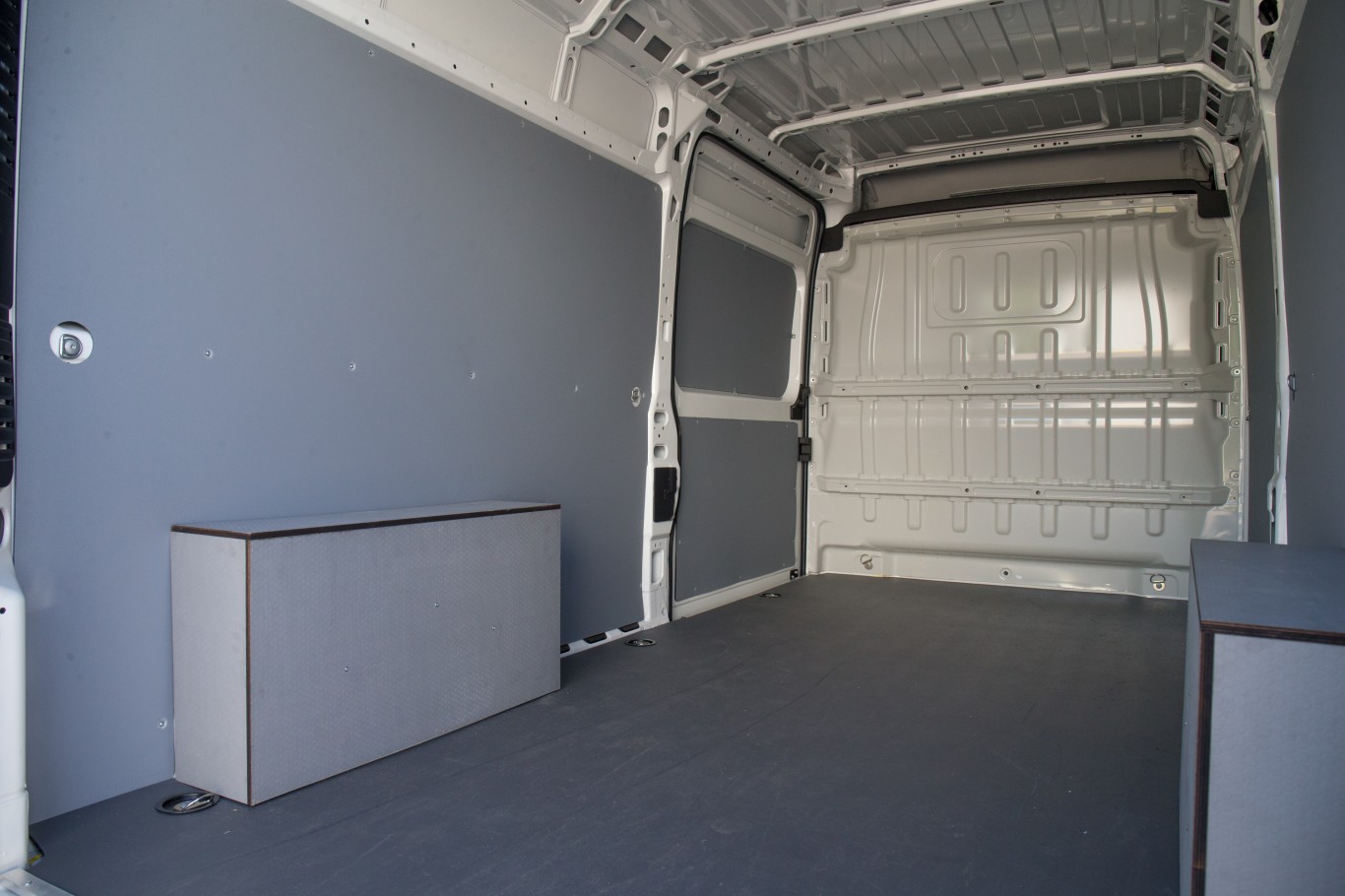
The Boxer does claw some points back with its comparatively low load lip though, thanks in part to being available in front-wheel drive only. The Crafter, when in front-wheel-drive guise, has a similarly low lip. The Sprinter on the other hand is rear- or four-wheel drive only, meaning a higher floor to accommodate the rear differential.
All three vans’ cabins are filled with cubby holes, storage bins, giant door pockets and so on, but each have some handy features of their own. The Peugeot’s dashboard has a flip-out clipboard and, should one not be enough, you can fold down the centre seat to reveal a second. In the Volkswagen, meanwhile, the passenger’s bench seat can be flipped up to reveal a handy hidden storage area.
The Sprinter does less well in this respect, with a slab-face dashboard that doesn’t provide anywhere near as much storage as the Crafter, and nothing else useful beyond a measly dash-mounted crocodile clip for holding loose documents.
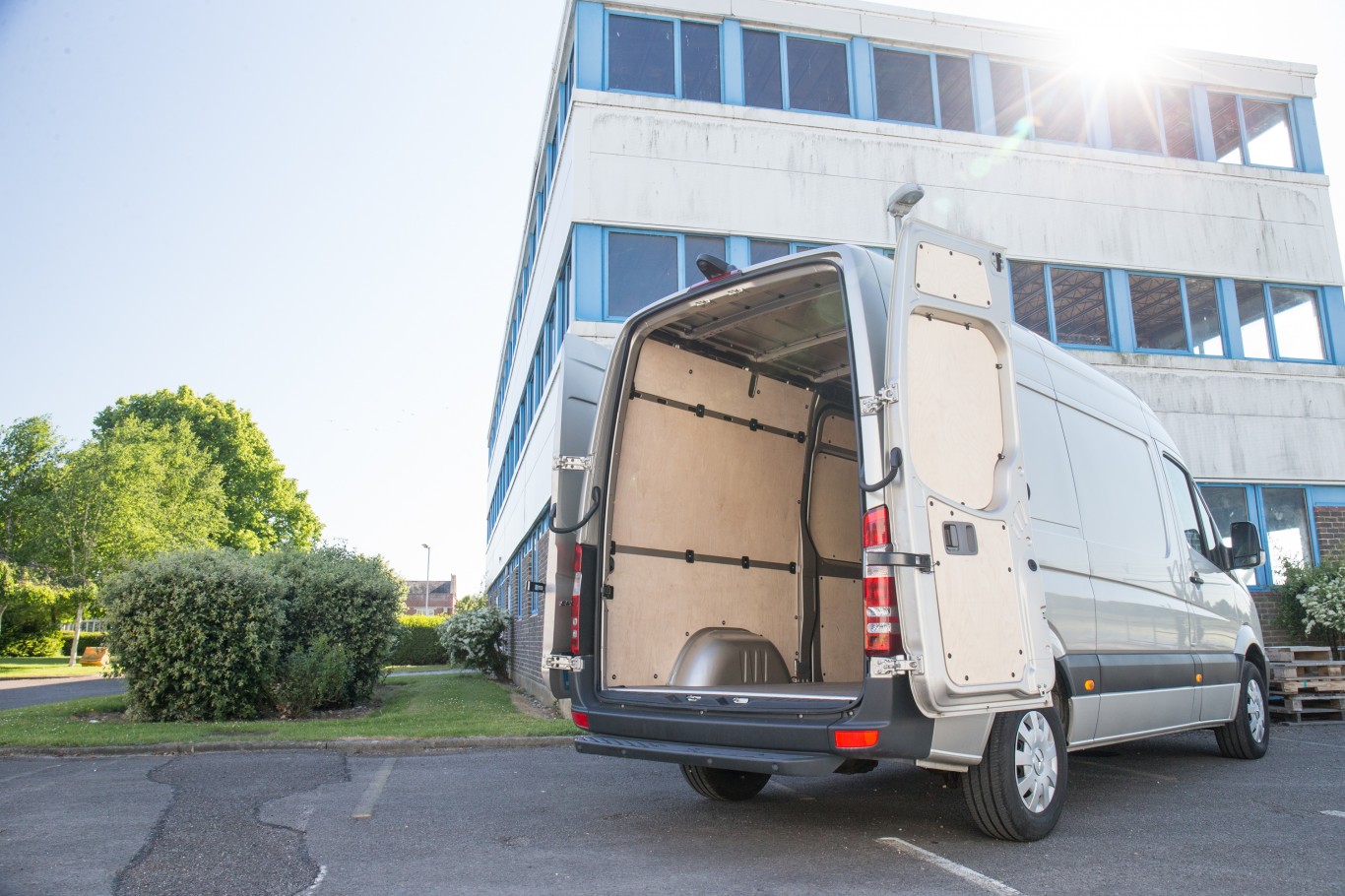
Behind the wheel
Unsurprisingly, none of these vans manages to pull off a car-like driving position, but the Crafter is arguably the easiest to get comfortable at the wheel. What’s more, its featherlight steering and slick manual gearbox mean it’s deceptively easy to drive, and its seats are the most comfortable here.
The Mercedes, complete with a seven-speed automatic gearbox on our car, is easy enough to pilot too – though turning the wheel at parking speeds takes far more effort than it should. Its seats lack support for the lower back too, which quickly becomes tiring on longer journeys.
The Peugeot on the other hand is certainly comfortable enough, but has an awkward-to-operate clutch, a handbrake on the wrong side and the most bolt-upright driving position of our three.
When it comes to refinement on the move, the Volkswagen wins again. It’s still no Passat in terms of quietness at motorway speeds – it’s hard to fight wind noise on something the shape of a house brick, after all – but it does a relatively good job of isolating you from road and engine noise.
The Mercedes comes second, with engine noise in particular fairly pronounced, and the Peugeot comes a close third.
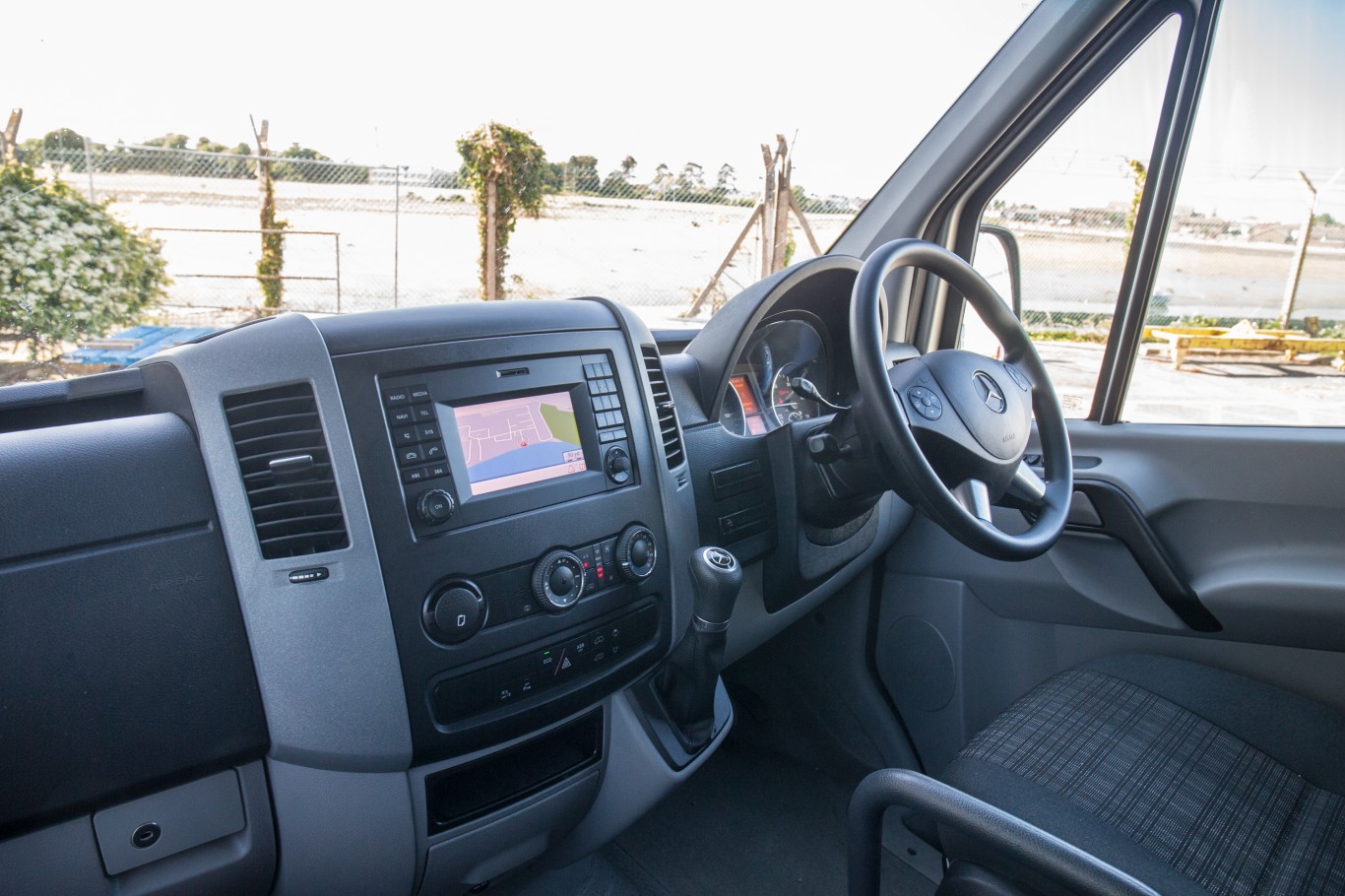
Value for money
The Boxer remains the cheapest of the three here, tipping the scales at £28,155 in our specification before VAT and on-the-road costs – and has the largest cargo space of our three. Our Crafter has a list price of £29,200, and the high-roof medium-wheelbase Sprinter is a fraction more at £29,950.
Things aren’t as clear cut as that, however. Tick a few option boxes and the gulf between the trio increases further – adding air conditioning to the Boxer costs £700 ex VAT, but on the Crafter you’ll need to find £1,375 for the same option.
In fact, on the whole there’s no arguing that the Crafter is the poshest of the three, with options including a heated windscreen, eight-inch touchscreen navigation and – somewhat surprisingly – massaging driver and passenger seats.
That said, as a basic van it’s also competitively priced, is the easiest to drive and isn’t likely to depreciate much – and for that reason it’s our winner. Second comes the Mercedes Sprinter, which feels solidly built but is starting to show its age, and third place goes to the spacious yet affordable Boxer.


